A Hop, Skip, and a Jump: Creating Your Own Sensory Path
The possibilities for creating a sensory path to give students a movement break are endless. Here’s what schools across the country are doing.
Your content has been saved!
Go to My Saved Content.In classrooms, hallways, and playgrounds around the country, distracted students are just a hop, skip, and a jump away from regaining focus, say teachers who have created sensory paths to give students a quick brain break.
Popularized by a viral video of a sensory path posted by special education teacher Holly Barker Clay, these indoor or outdoor pathways are composed of visual and tactile elements like sand, shapes, and colored stickers. As students move along the path, they are cued to perform a series of movements to activate different parts of the body and the brain.
“Our students love our sensory paths,” says Yanelis Cabaleiro, supervisor of early childhood education at Belleville Public Schools in New Jersey. Need some inspiration for your own sensory path? Here are several ideas collected from Edutopia readers around the country.
A Close Look at Sensory Paths
An engaging sensory path can be created indoors or outdoors. In this video filmed at Aurora Waasakone Community of Learners in Bemidji, Minnesota, the sensory path gives a student a nice break while moving through the hallways.
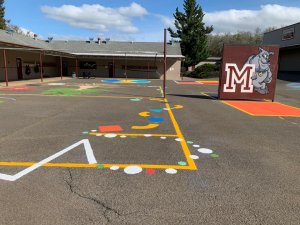
Looking for an easy and effective—and inexpensive—way to get kids moving? At Melrose Elementary School in Roseburg, Oregon, educators simply painted different shapes in primary colors on the playground’s asphalt.
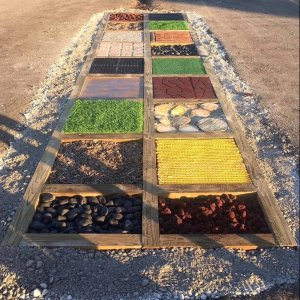
Other educators have made paths using tactile materials that stimulate students’ feet or hands, which has a positive impact on their concentration and motor skills. Textured rocks, beads, straw, and grass form a grid path at Walter Shade Early Childhood Center in West Carrollton, Ohio.
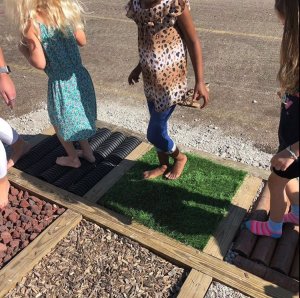
Barefoot is best, of course.
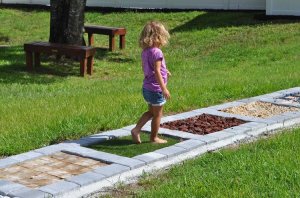
During a busy school day, sensory paths can give students a brain break or a chance to practice mindfulness, say teachers. To provide a wide range of sensory experiences, educators at Opportunity Early Childhood Education and Family Center in West Palm Beach, Florida, mixed natural and synthetic materials like smooth rocks, plastic beads, and sand.
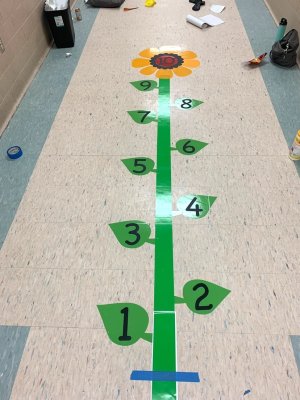
When making a paths inside schools, which students can use in any weather, educators have gotten creative with stickers, decals, and colored duct tape. At Wyland Elementary School in Allison Park, Pennsylvania, the sensory path guides students to step on the leaves and the sunflower as they count from 1 to 10.
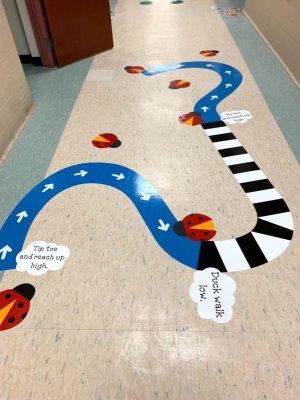
This sensory path at Wyland is decorated with ladybug decals and written prompts like “Duck walk low” and “Tip toe and reach up high.” Students practice following directions while developing proprioception—an awareness of where their bodies are in space.
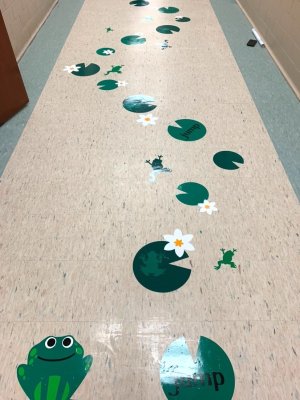
The frog-themed, zigzag path at Wyland prompts students to jump, training them to develop their sense of balance.
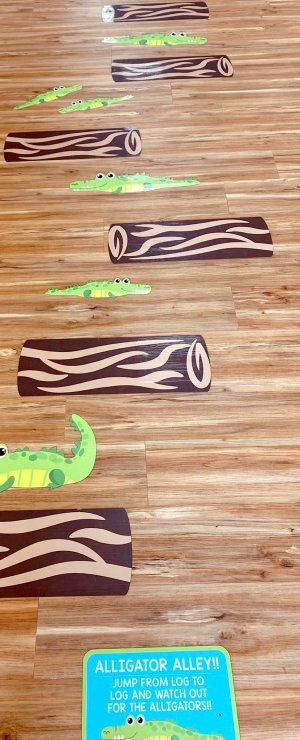
At Belleville Public Elementary School and Hornblower Early Childhood Center in New Jersey, teachers designed a tropical-themed sensory path with mini challenges along the way. To stay away from the alligators in Alligator Alley, students must maintain their balance as they jump from log to log.
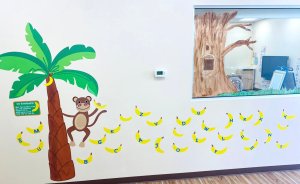
Movement is the crucial aspect of a sensory path, but some teachers have also incorporated educational activities in them. This sensory path at Hornblower Early Childhood Center prompts students to review the alphabet while helping the monkey find bananas.
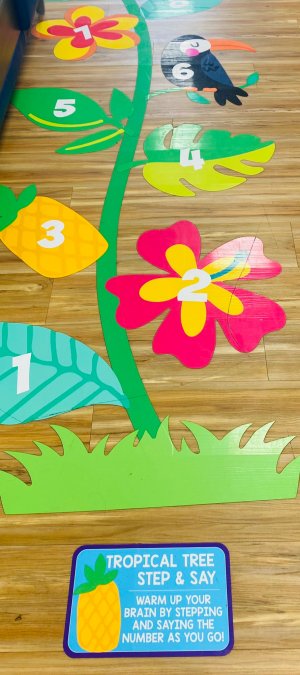
Students say the numbers out loud as they walk through this tropical tree path at Hornblower Early Childhood Center.
